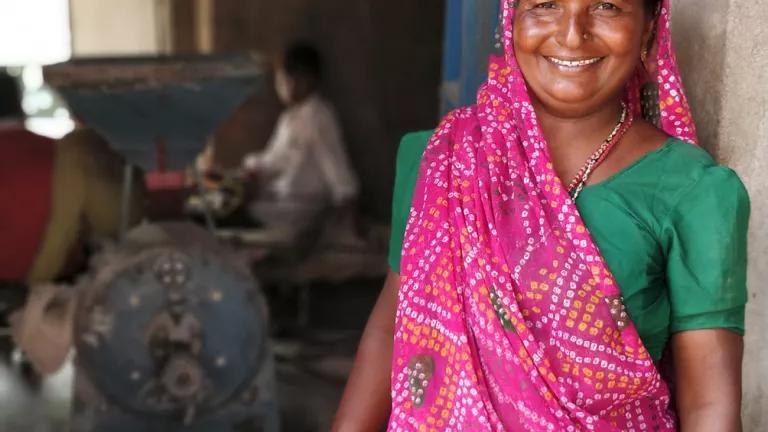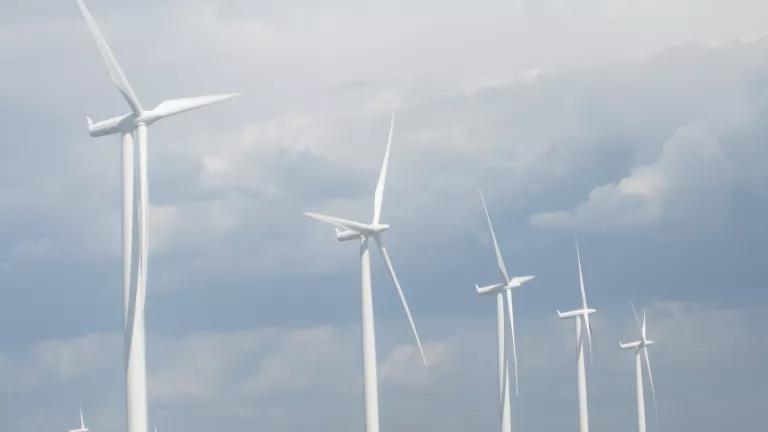India Green News: Cyclones, Clean Energy, and Air Pollution
Here's the latest news about environmental and energy issues in India.

India Green News: Cyclones, Clean Energy, and the Parallels between COVID-19 and Air Pollution
(India Green News is a selection of news highlights about environmental and energy issues in India.)
June 8th to June 30th, 2020
CLIMATE CHANGE
(Source: Business Insider)
India suffered from two powerful storms — super cyclone Amphan and extremely severe cyclone Nisarga — in a span of 15 days. And now, the Indian Meteorological Department has issued yet another warning of Gati — a low-pressure area developing over the Bay of Bengal. Storm Gati may not cause as much damage as super cyclone Amphan, but it will bring heavy rains in Odisha.
According to climate scientists, such as extreme weather events in the northern Indian Ocean are common now due to climate change. Moreover, they expect the frequency and intensity of such cyclones to increase on both the east and west coast of the Indian subcontinent.
(Business Insider - June 8, 2020)
India deploys choppers to control locusts in five Rajasthan districts. India will use helicopters for the first time to spray chemicals to oust locusts in five districts of Rajasthan in the next few days; as fresh swarms threaten to come towards the desert state from neighboring Pakistan.
A helicopter will be used to spray chemicals in the desert districts of Barmer, Jaisalmer, Bikaner, Jodhpur and Nagaur, as per protocol, an official statement said.
(Business Standard - June 29th, 2020)
Climate report predicts hotter, rainier days
India’s first ever national forecast on the impact of global warming on the subcontinent in the coming century, expects annual rainfall to increase, along with more severe cyclones and — paradoxically — more droughts.
These projections, based on a climate forecasting model developed at the Indian Institute of Tropical Meteorology (IITM), Pune, will be part of the next report of the Intergovernmental Panel on Climate Change (IPCC), expected to be ready in 2022.
From 1986-2015, the hottest day and coldest night have warmed 0.63°C and 0.4°C, respectively. By the end of the 21st century, the report says, these temperatures are projected to rise by approximately 4.7°C and 5.5°C, respectively, relative to the corresponding temperatures in 1976-2005. This under a hypothetical scenario where no steps are taken to curb global greenhouse gas emissions or the RCP8.5 as it is called.
(The Hindu - June 16th, 2020)
ENERGY

(Source: PV Magazine)
Denmark and India sign MoU on green energy transition
India’s Ministry of Power and the Danish Ministry of Climate, Energy & Utilities have signed a Memorandum of Understanding (MoU) to cooperate on green energy transition in India.
The MoU will be the foundation for the new 5-year Indo-Danish cooperation called the India-Denmark Energy Partnership. The partnership aims at supporting the ambitious Indian target of 175 GW by 2022 and a long-term target of 450 GW renewable energy capacity announced by Prime Minister Narendra Modi at the UN Climate Summit in September 2019.
(PV Magazine - June 8th, 2020)
Clean energy can support India’s economic recovery post-COVID-19
India’s transport sector can save 1.7 gigatonnes of cumulative carbon dioxide emissions and avoid about 600 million tonnes of oil equivalent in fuel demand by 2030 through shared, electric, and connected passenger mobility and cost-effective, clean, and optimized freight transport says NITI Aayog in its report titled Towards a Clean Energy Economy: Post-Covid-19 Opportunities for India’s Energy and Mobility Sectors.
Laying out a four-pronged strategy for policymakers and other key decision-makers to support India’s clean energy future, the report said the government needs to invest in least-cost-energy solutions, support resilient and secure energy systems, prioritize efficiency and competitiveness, and promote social and environmental equity.
(The Economic Times - June 30th, 2020)
ENVIRONMENTAL HEALTH AND AIR POLLUTION

(Source: ThePrint)
Delhi and Mumbai’s high Covid tally linked to severe air pollution levels, say experts
Indian climate and health experts say high pollution levels impact the immunity of people, making them more susceptible to Covid-19. This echoes a similar finding in a Harvard study.
The rise of Covid-19 cases in the national capital and Mumbai, the two worst affected cities in India, is linked to their air pollution levels, experts have said.
Speaking to ThePrint, health and climate experts said higher air pollution levels in these cities over a prolonged period have compromised the population’s immunity, making them more susceptible to the coronavirus.
(ThePrint - June 25th, 2020)
Assam gas leak: why it’s tough to plug, and what threat it poses to the area
As many as 1,610 families with 2,500-3,000 people have been evacuated to relief camps. There are reports of deaths of a river dolphin, and a variety of fish.
Since the morning of May 27th, natural gas has been continuously flowing out of a gas well in Assam following a blowout — or a sudden, uncontrolled release of gas/oil. With authorities unable to control it, experts from a Singapore firm reached Assam today. Meanwhile, people from surrounding villages have been evacuated, while a variety of fish and an endangered Gangetic dolphin have died.
(The Indian times - June 8th, 2020)
This edition of the India Green News was compiled by Marie McNamara, NRDC Duke Stanback Fellow



